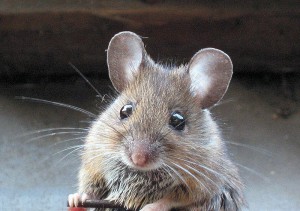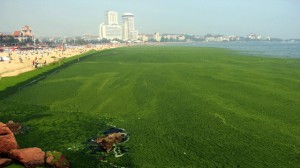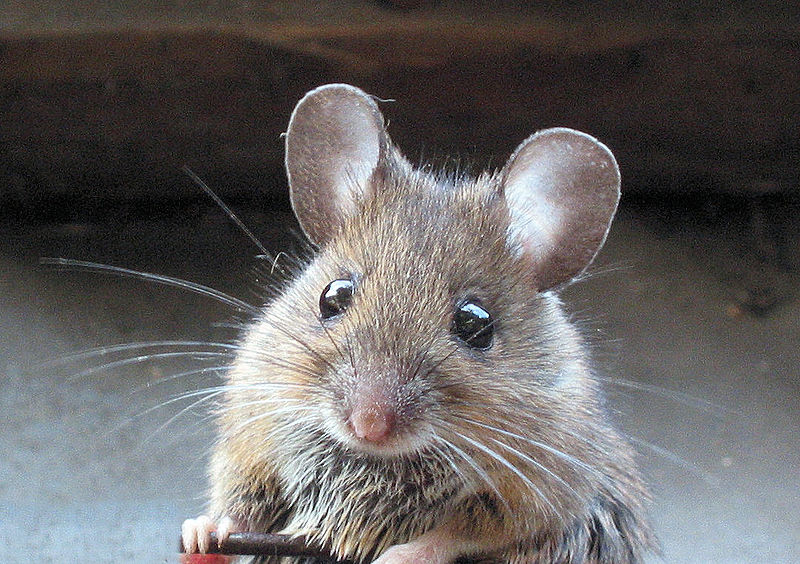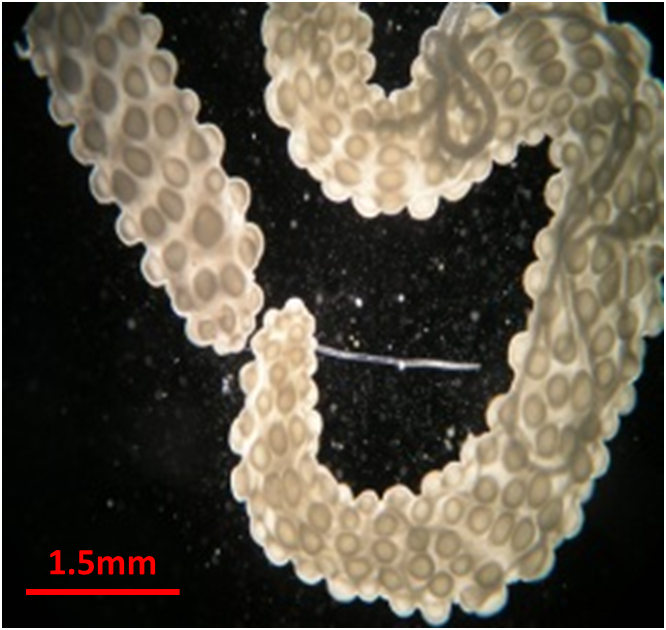
As mentioned previously on the blog, Andrew Jackson and I started a new module this year called “Research Comprehension”. The module revolves around our Evolutionary Biology and Ecology seminar series and the continuous assessment for the module is in the form of blog posts discussing these seminars. We posted a selection of these earlier in the term, but now that the students have had their final degree marks we wanted to post the blogs with the best marks. This means there are more blog posts for some seminars than for others, though we’ve avoided reposting anything we’ve posted previously. We hope you enjoy reading them, and of course congratulations to all the students of the class of 2014! – Natalie
Here’s views from Sharon Matthews on Dr. Amy Pedersen‘s seminar, “A systems ecology approach to infection and immunity in the wild” and Dermot McMorrough’s take on Professor Christine Maggs‘ seminar, “Invasive seaweeds and other marine organisms”.
——————————————————————————
It’s a ‘wormy’ world we live
Sharon Matthews
We all walk around thinking I will never have parasites but apparently our chances of becoming infected are high because there are around 1,400 species of parasite that can infect humans. If this news wasn’t bad enough, Dr. Amy Pederson informed us at her seminar that our chances of becoming infected with two or more parasites at the same time, is also very high. Dr. Pederson explained that through her work, she hopes to understand the phenomenon of co-infection and the interactions between these parasites in a host that drive this trend.
Dr. Pederson and colleagues showed through a meta-analysis of studies that co-infection is often associated with higher parasite abundance and a negative effect on human health. The interspecific interactions between parasites in a host can influence disease severity and transmission through the immunological responses of the host, making an environment more accessible for another species.
To investigate this phenomenon, Dr. Pederson chose to do a perturbation study using the wild species of wood mouse, Apodemus sylvaticus as a host system. A lot of past studies on parasitism have used a laboratory mouse model because of accessibility to the subject and ease of manipulation and control of confounding factors. I think it is very important to also have wild animal model systems because they strongly represent the variation and dynamics that would be seen in a real-life infection scenario. Also the wood mouse can be parasitised by 30 different species (both micro and macro parasites) and up to 70% of them can be co-infected which resembles the situation in humans.
Dr. Pederson wanted to determine the nature of the interactions among the parasite community in the woodmouse and to assess the stability of the community so she used the anthelminthic drug ivermectin to perturb the system. This drug targets nematodes, the most abundant member of this community so interactions between these and other groups should be apparent from perturbing their numbers. I liked the fact there was a longitudinal aspect to the experimental design as it allowed the effects on the parasite community to be analysed over time. All of the wood mice were tagged at the beginning and there were 3 different treatment groups: controls that received water at every monthly capture, a single treatment group and a group that received treatment of ivermectin at every capture. Faecal and blood samples were taken at each capture to check for levels of infection through egg counts and blood smears.
The results showed that treated mice had a 71% lower probability of infection 3 weeks after treatment than control mice but no difference was seen after one to two months because nematode numbers increased. This suggests that the effect on nematodes was short-lived and the community of parasites was resilient, returning to the original state before perturbation. This pattern for reduction and then returning to normal levels of infection was seen in Heligmosomoides polygyrus, the most abundant nematode in the community. This parasite shares an infection site with the protist, Eimeria hungaryensis. As the numbers of H. polygyrus reduced, the numbers of E. hungayensis increased and then returned to original levels once H. polygyrus recovered. This effect on a non-target species suggests that there may be a competitive interaction between the two species. They both occupy the same niche in the gastrointestinal tract of the wood mouse and reduction of numbers of the more dominant nematode may have given the protozoan a chance to use resources not normally available to it to colonise. No treatment effect was seen on any of the other parasite species.
The work of Dr. Pederson is very interesting and it gives us a window into the dynamics underlying co-infection. This work will broaden our understanding of the world of parasites and how they interact and will help inform us in our choice of treatment and which species may be effected by it. The one thing I was happy about coming out of the seminar was the fact that Dr. Pederson said, “those who are wormy usually remain wormy”. In other words, individuals with high burdens of nematodes (worms) show a tendency for reinfection over time. That leaves me with some hope that for at least now, I remain wormless and if the stats are anything to go by, I have a chance at remaining wormless for the forseeable future.
——————————————————————————
Review of Christine Maggs’ seminar
Dermott McMorrough
The effect of invasive species is, by now, well documented and is often brought to light when species’ such as grey squirrels, American crayfish, zebra mussels, and Japanese knotweed turn up in a new environment; an event all to familiar to ecologists. Those listed above are just some of the examples of ‘alien’ species known to kill off native creatures and plants when they become established in new habitats. In Ireland, for example, the role of the North American Grey Squirrel has been well studied due to the effect they have had on our native Red Squirrel since their introduction into Co. Longford in 1911.
Invasive species have an incredible ability to migrate and establish themselves thousands of miles from their origin, either organically, or often with a helping hand from humans for example by hitching a ride as stowaways on trade ships or in ballast tanks, as has been the case with Zebra Mussels. The shared ability of the aforementioned species to colonise vast areas is no mere coincidence. Several species are introduced to new ecosystems, accidentally or otherwise, but relatively few have enjoyed such enduring success. Aside from threatening native species of plants and wildlife, the incredible growth of these species can lead to them negatively impacting on anthropogenic activities, whether it be fouling mooring lines or clogging water intake pipes as has been the case at the Guinness brewery at St. James’ Gate.
Professor Maggs’ seminar began with an explanation of how an invasive species can colonise an area. While her background was evidently in Botany, she made a particular effort to appeal to the zoologists in the audience with numerous references to the role of oysters in the spread of macro algae. Her research covers a fairly broad area, and pinpointing an exact research question has eluded many in the room. We were, however, treated to a synopsis of how invasives go about establishing themselves, and the methods often employed to prevent this process or eradicate it if it has already taken place. For example, methods such as immersing oysters in concentrated brine or flash boiling them have proven effective in fighting the spread of invasive algae, which use the oysters as a vector.
The spread of an invasive alga would not seem like an immediately worrying problem to those untrained in ecology. As with many problems in science, it is not until the issue directly affects the people in charge of policy making that anything is done to rectify it. This unfortunate criterion was evident in one of the examples used by Professor Maggs. In 2008, the city of Qingdao was due to host the Sailing event of the 29th Olympic games, but just weeks before racing was due to start, an algal bloom covered Qingdao bay in a thick layer of Enteromorpha algae. The presence and strength of the bloom was largely accredited to the high levels of nitrates in the water as a result of farmland runoff, coupled with higher than average temperatures and rainfall. During the seminar, the use of giant plastic sheets in San Diego Bay was seen as an American answer to an ecological problem, but it worked. Credit where credit is due. The imminent deadline of the Olympiad prompted the Chinese authorities to tackle this ecological disaster with what has to be the most wonderfully Chinese way possible: by ordering 20,000 locals to line the beaches, and man over 1,000 fishing boats to rake in the bloom manually. Sure enough, within a few days over 100,000 tonnes of the algae had been shipped out of the bay.

Increases in the amount of travelling done by humans and more importantly freight over the past century has led to an explosion in the ranges of successful invasive species, to the point at which one must wonder how endemic species can survive at all? The increased efficiency of our transit routes has also meant that invasives no longer rely on miracle migrations, such as that likely undertaken by the Iguana of the Galapagos. With the ever-increasing demand for fresh exotic produce in the developed world, the ships are getting faster, the coolers are getting colder, and the chances of an invasive species making it’s way around the world in less than 24 hours, perfectly preserved in Tesco wrapping and ready to colonise a new ecosystem have been made just that much easier. It seems that when it comes to being an invasive species, every little helps.



